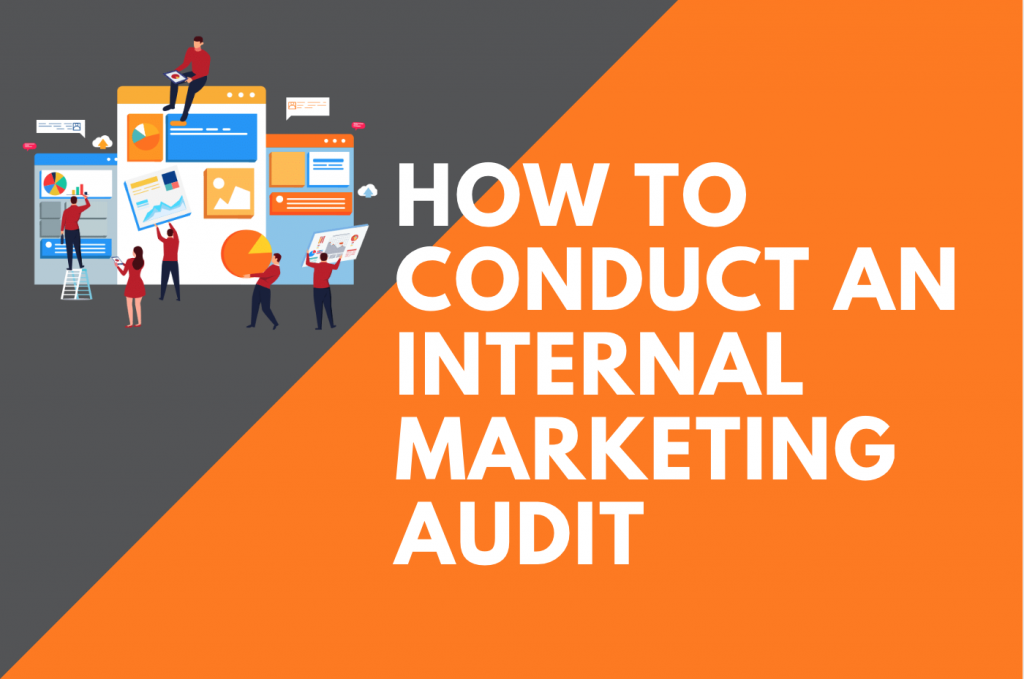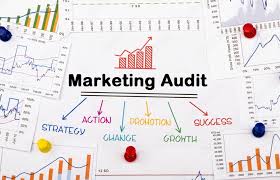A marketing audit is a comprehensive and systematic examination of a company's marketing environment, strategies, activities, and performance. It aims to assess the effectiveness of the marketing efforts and identify areas for improvement. The audit provides insights into how well a company is achieving its marketing objectives, whether its strategies align with its goals, and what adjustments or changes are needed to enhance its overall marketing performance. Here are the key components typically involved in a marketing audit:
Internal Analysis:

- Marketing Objectives and Goals:
Evaluate the clarity, specificity, and measurability of the marketing objectives and goals. Are they well-defined and achievable?
Check if these objectives are aligned with the broader business goals and mission of the company.
Assess whether the objectives are time-bound and have key performance indicators (KPIs) associated with them for easy measurement.
Examine the overall marketing strategy in terms of market segmentation, targeting, and positioning. Are the chosen target segments well-defined and relevant?
Analyze the company's value proposition and how it differentiates itself from competitors in the chosen segments.
Review whether the marketing strategy considers the product life cycle and adapts accordingly.
Product: Evaluate the product portfolio, product features, quality, and innovation. Are the products meeting customer needs effectively?
Price: Assess the pricing strategy in relation to customer perceptions, competitor pricing, and the value offered by the products or services.
Place (Distribution): Analyze the distribution channels and their efficiency in reaching the target audience. Consider online and offline distribution methods.

Promotion: Examine the promotional activities, advertising campaigns, public relations efforts, and other methods used to communicate with customers.
- Marketing Organization and Structure:
Review the organizational structure of the marketing department. Is it organized in a way that promotes collaboration and efficient workflow?
Assess the roles and responsibilities of the marketing team members. Do these roles align with the company's marketing objectives and strategies?
Consider how well the marketing team coordinates with other departments like sales, product development, and customer service.
- Resource Allocation and Budgeting:
Evaluate the allocation of resources (financial, human, technological) to the marketing department. Are the resources sufficient to execute the marketing strategies effectively?
Review the marketing budget and its allocation across different initiatives. Are there areas where resources might be better allocated for improved ROI?
- Marketing Technology and Tools:
Assess the marketing technologies and tools in use, such as customer relationship management (CRM) systems, analytics platforms, and marketing automation software.
Determine whether these technologies are effectively leveraged to gather insights, personalize marketing efforts, and streamline processes.
- Internal Strengths and Weaknesses:
Identify the company's strengths that can be leveraged for marketing success. These could include strong brand equity, innovative products, skilled workforce, etc.
Recognize internal weaknesses that might hinder marketing performance, such as limited resources, outdated technology, or inefficient processes.
- Marketing Performance Data:
Review historical marketing performance data, including sales figures, customer acquisition costs, customer retention rates, and customer feedback.
Analyze trends in marketing metrics to understand what's working and what's not in terms of marketing strategies and tactics.

The internal analysis provides a comprehensive view of the company's marketing efforts from within, allowing for a thorough assessment of the alignment between marketing objectives, strategies, and the resources available. This understanding is crucial for developing informed recommendations and strategies that can lead to improved marketing performance.
External Analysis:
External analysis involves assessing the factors and forces outside the company's control that can influence its marketing efforts and overall business performance. This analysis helps the company understand its market environment and make informed decisions about its marketing strategies. Here are the key elements of external analysis:
- Market and Industry Trends:
Market Growth: Identify whether the market is expanding, stagnant, or contracting, and assess potential reasons for the trend.
Emerging Markets: Investigate if there are new geographic areas, demographic segments, or niches that the company can tap into.
Consumer Preferences: Analyze shifting consumer preferences, behaviors, and purchasing habits that might impact the company's product offerings and marketing messages.
Competitor Identification: Identify direct and indirect competitors operating in the same industry or serving a similar target audience.
Competitive Strategies: Evaluate competitors' marketing strategies, pricing approaches, product offerings, and positioning to understand their strengths and weaknesses.
Market Share Analysis: Determine the market share of each major competitor and assess how the company's market share compares.
Demographics: Understand the age, gender, income, education, and other demographic characteristics of the target audience.
Psychographics: Dive into the target audience's values, beliefs, lifestyle, interests, and buying motivations.
Needs and Preferences: Determine what customers are looking for in terms of products, services, and experiences.
- Macro-Environment Factors:
Economic Factors: Evaluate the economic conditions that could impact consumer spending, such as inflation, unemployment, and disposable income levels.
Social Factors: Consider societal trends, cultural shifts, and social attitudes that influence consumer behaviors and preferences.
Technological Factors: Analyze technological advancements that could open new marketing channels, change consumer behaviors, or disrupt existing business models.
SWOT Analysis:
Strengths: Identify the company's internal strengths that can be leveraged for competitive advantage.
Weaknesses: Pinpoint internal weaknesses that need to be addressed for improved marketing performance.
Opportunities: Highlight external opportunities that the company can capitalize on to enhance its market position.
Threats: Recognize external threats that could hinder the company's marketing success and develop strategies to mitigate them.
Performance Analysis:
Marketing Metrics and KPIs: Assess the company's performance using relevant marketing metrics such as sales revenue, customer acquisition cost, customer lifetime value, conversion rates, etc.
ROI Analysis: Evaluate the return on investment for different marketing initiatives to determine their effectiveness and prioritize resource allocation.
Digital Presence and Online Marketing:

Website and Social Media Audit: Evaluate the company's website, social media profiles, and online content for user experience, consistency, and alignment with brand messaging.
Digital Marketing Strategies: Review the effectiveness of online advertising, content marketing, social media campaigns, email marketing, and other digital channels.
Recommendations and Action Plan:
Based on the findings from the audit, develop actionable recommendations and a strategic plan to optimize the company's marketing efforts. This plan should address areas that need improvement, leverage strengths, capitalize on opportunities, and mitigate threats.

A marketing audit should be conducted regularly to ensure that the company's marketing strategies remain aligned with its evolving business goals and the changing market landscape. Visit our website to learn more on how to carry out a marketing audit.
